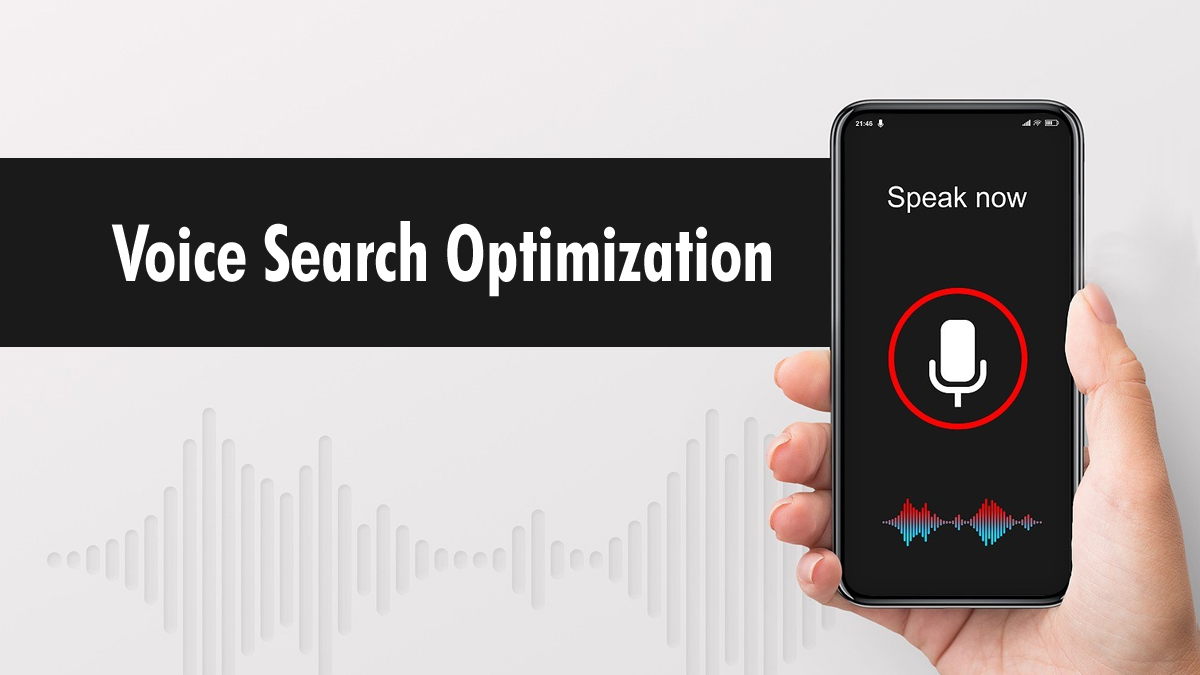If you’re gearing up for an SEO interview and aim to excel, you’ve landed on the right page. SEO interview questions evaluate various competencies, such as technical skills, on-page and off-page optimisation expertise, content strategy acumen, proficiency in data analysis, understanding of search engine algorithms, skills in mobile and local SEO, competitive analysis, adaptability to algorithmic changes, effective communication, and problem-solving abilities.
SEO is a cornerstone in today’s digital marketing landscape as it boosts online traffic, elevates ROI, and offers insights into customer behaviour. So, whether you’re new to the field or looking to climb the career ladder, preparing for your SEO interview is crucial.
To assist you, we’ve compiled an exhaustive list of over 80 SEO interview questions, segmented into three levels: beginners, intermediates, and experts. These questions and answers touch upon critical SEO areas for both newcomers and seasoned veterans. Are you ready to ace that SEO interview? Let’s dive in!
These SEO interview questions are an essential tool for SEO service providers during the recruitment process, ensuring that new candidates possess the up-to-date knowledge and skills required for success in the industry. By using these targeted questions, hiring managers can effectively gauge the proficiency of prospective SEO professionals and make informed hiring decisions that will contribute to their company’s growth and adaptation in the ever-evolving digital landscape.
Technical SEO Interview Questions
What are some common SEO mistakes you’ve noticed in other companies?
This question should be a breeze if you have previous experience in an SEO managerial role. Discuss common pitfalls like poor keyword selection, failure to stay updated with Google’s algorithms, neglecting mobile optimisation, and overlooking analytics. Feel free to add any other mistakes based on your specific experience.
What is the process of utilising content marketing to enhance SEO?
Content marketing is indispensable for successful SEO. High-quality content is highly valued by Google, and you can leverage this content to amplify your SEO results. Moreover, effective content marketing can generate shareable content, attracting backlinks from other sites. This strategy often employs blogs but can also include a myriad of other formats like videos, podcasts, infographics, ebooks, and more.
Why is canonicalisation important for SEO, and what is it?
Canonicalisation in SEO refers to the practice of choosing a single, preferred URL for content when multiple versions exist. It’s vital because it resolves duplicate content issues, consolidates ranking signals, and enhances the user experience. Doing so optimises link equity preservation and overall SEO effectiveness.
How can web analytics be used to measure SEO performance?
To provide a comprehensive answer, let’s delve into how Google’s web analytics tools can be employed. Focus on metrics like time spent on pages, direct navigation duration, referral traffic, visitor counts, and conversion rates. Analysis of these data points is crucial for assessing the efficacy of your SEO strategies.
What exactly does RankBrain do, and why is it important?
Google can often seem mysterious, and one enigmatic component within its search engine is RankBrain. Acting as an advanced machine-learning algorithm, RankBrain prioritises the relevance of search results, especially for unique queries that aren’t based on specific terms. The key takeaway? You can’t explicitly optimise for RankBrain. Instead, focus on creating excellent, high-quality content, as RankBrain is more interested in content relevance than keyword density.
Also Read: What Is SEO and How Does SEO Work? Starter SEO Guide
Why do internal links matter?
Internal links connect different pages within the same website. These links are vital for ensuring that search engines can effectively index and rank all of your site’s content.
What is the robots.txt file, and how is it used in SEO?
The robots.txt file is a text file located in the root directory of your website. It serves as a guide for search engine crawlers, dictating which pages should be crawled and which should be ignored. In SEO, the robots.txt file is used to control how search engine spiders interact with your website content.
You can specify permissions for directories, pages, and even specific user agents. While robots.txt provides a foundational level of control, keep in mind that it’s not foolproof; hence, it should be used in conjunction with other SEO strategies.
How can SEO and PPC work together to make things better?
In SEO interviews, you may be asked how Pay-Per-Click (PPC) can supplement SEO efforts, particularly as SEO-optimised pages take time to rank. PPC tools are valuable, especially given the scarcity of dedicated keyword research tools solely for SEO. These tools allow you to test a keyword’s effectiveness before incorporating it into your broader SEO strategy.
What is Domain Authority?
Domain Authority is a metric that essentially quantifies a website’s credibility or influence in a specific industry or niche. Developed by Moz, this score is used by search engines’ algorithms to help determine a website’s ranking in search results.
Why does site speed matter for SEO, and how can you make it better?
Site speed is critical for SEO for several reasons:
- Faster websites offer a better user experience.
- Google’s algorithm considers page speed when determining rankings.
- Slow-loading sites can result in higher bounce rates and reduced engagement.
To enhance site speed, you can:
- Optimise media files and images.
- Minimise the number of elements on a page to reduce HTTP requests.
- Enable browser caching.
- Utilise Content Delivery Networks (CDNs).
- Minify HTML, JavaScript, and CSS files.
How do you stay abreast of Google and business news?
To answer this question comprehensively, mention the specific blogs, newsletters, or tools you regularly consult. Popular resources like Moz and SearchEngineLand are often cited. Also, feel free to include any lesser-known yet insightful publications that you find useful. This multi-faceted approach demonstrates your commitment to staying current and gives a fuller picture of your go-to sources for information.
How do you intend to establish an SEO strategy?
When responding to this question, draw upon your own expertise and experience. Key areas to discuss include your understanding of short-term and long-term goals, knowledge of the competitive landscape, and insights into the target audience. Keep in mind that your unique experiences will likely contribute to a tailored SEO strategy.
What’s the most successful thing you’ve achieved in digital marketing?
It’s true that some SEO interview questions can be challenging, and we can’t provide specific answers for you. However, it’s crucial to be prepared with well-thought-out responses. To bolster the credibility of your answers, make sure to arrive equipped with relevant information.
Have you ever been in charge of a marketing or SEO team?
This can be another tough question you may encounter during an SEO interview. If you’re applying for a managerial role in SEO, it’s vital to discuss your previous leadership and management experience.
Also Read: Top 15 Skills an SEO Expert Should Have to Be Successful
What is “structured data,” and how does it impact SEO?
Structured data, often in Schema.org format, acts as a guide for search engines to better understand the content on a web page. It helps clarify the relationships between various elements on your site, such as products, reviews, events, recipes, and more. Implementing structured data can enhance your search result listings by adding additional information or visuals, which can lead to more clicks and higher rankings.
Why are XML sitemaps important for SEO?
In the context of SEO, XML sitemaps are indispensable for helping search engines comprehend the structure of your website. Simply put, these are files that list all of the crucial web pages on your site. Here’s why they are important:
- They ensure that all key pages are discovered and indexed by search engines.
- They allow search engines to locate new or recently updated content quickly.
- They can provide supplemental metadata about each page, such as the date of the most recent update.
From an SEO standpoint, how may duplicate content problems on a website be resolved?
To address duplicate content issues effectively from an SEO standpoint, you can:
- Identify duplicate content on your site.
- Utilise 301 redirects or canonical tags for similar content.
- Manage URL parameters appropriately.
- Implement markup for pagination.
- Consider using a “noindex” tag for less important pages.
- Consolidate similar content.
- Review and update internal linking structures.
- For syndicated content, apply canonical tags.
- Minimise the use of generic content.
- Regularly monitor and update your website.
How does user experience (UX) affect SEO, and how can it be made better?
A strong user experience (UX) positively affects SEO in the following ways:
- Lowers bounce rates.
- Increases dwell time on pages.
- Enhances mobile-friendliness.
- Speeds up page loading times.
- Simplifies navigation.
- Provides high-quality content.
To further improve UX for SEO, you can:
- Optimise for mobile platforms.
- Accelerate page load times.
- Simplify website navigation.
- Produce high-quality content.
- Implement structured data.
- Gather user feedback.
- Improve accessibility.
- Incorporate effective internal linking.
- Encourage social media sharing.
What are the main differences between on-page SEO optimisation and off-page SEO optimisation?
On-page SEO focuses on optimising specific web pages for better user experience, HTML element optimisation, and content relevance. Off-page SEO, conversely, targets activities outside your website, such as link-building, online reputation management, and social media marketing, to enhance your site’s authority and visibility.
On-Page SEO Interview Questions
What is On-Page SEO?
On-Page SEO involves optimising your website to improve its performance in search engine rankings, enhance user experience, and boost conversion rates. Key elements for this optimisation include page titles, meta descriptions, meta tags, URL structure, body tags, keyword usage, images, and internal linking. Addressing these elements effectively will significantly enhance your site’s ability to attract and retain visitors, as well as encourage conversions.
What is a keyword?
A keyword is a word or phrase that individuals input into search engines when they are looking for something online. These can also be referred to as queries on occasion.
Once we have identified the keywords your potential users frequently utilise and completed our research, the next step is to incorporate these into the relevant webpages. We then optimise these pages to improve their search engine rankings.
What are the various types of keywords?
While optimising a webpage, you’ll primarily encounter two types of keywords:
- Primary Keywords: These should be the main focus of the website. To optimise the content effectively, this primary keyword should be included in the introductory paragraph, headings, and subheadings. However, be cautious not to overuse it.
- Related Keywords: These are also known as Latent Semantic Keywords. Essentially, these are synonyms or closely related terms to your primary keyword and should naturally appear in your on-page content.
It’s also beneficial to understand other types of keywords used in the SEO industry, such as geo-targeting, long-tail, and short-tail keywords.
What do keyword frequency, keyword density, keyword difficulty, and keyword proximity mean?
- Keyword Frequency: This term refers to how often a specific keyword or phrase appears on a webpage. It’s important to strike a balance to avoid keyword stuffing.
- Keyword Density: This measures the ratio of the keyword’s appearance on a webpage. Overdoing it could lead search engines to label the page as keyword stuffing. For example, a 2.5% density occurs if a term appears five times in a 200-word essay. While there’s no magic number, SEO best practices generally recommend a density of 3-4%.
- Keyword Difficulty: This metric helps us understand the challenges associated with ranking for a particular keyword. More challenging keywords may require additional time and backlinks for effective competition.
Keyword Proximity: This concerns the closeness of two keywords on a webpage and should be considered in your optimisation strategy.
What does “long tail keyword” mean?
A “long-tail keyword” is a more specific, often longer phrase or set of words that users input into search engines when searching for a product or service. These are generally more descriptive and consist of three or more words. For instance, if someone wishes to purchase a camera, the head keyword might be “camera.”
A more specific long-tail keyword like “best digital camera for landscape photography” reveals the user’s precise intent. Long-tail keywords are useful for both businesses and content creators as they help target a niche audience and attract users who are more likely to convert or take specific actions.
What are meta descriptions?
Meta descriptions serve as concise summaries for websites. They’re not just for the benefit of search engines; they also help users understand the content of a website. These descriptions appear in search results, situated below the page titles.
Importantly, meta descriptions now play a significant role in SEO. It’s advisable to include relevant keywords within them. But that’s not all; you should also craft them to be compelling enough to entice readers to click on your page, thus increasing your Click-Through Rate (CTR).
What are Meta Tags?
Meta tags are vital HTML elements that provide information about the content of a webpage. Located within the “head” section of the HTML code, these tags are indispensable for SEO. The three primary types of meta tags are:
- Title Tag: This tag sets the webpage’s title and is crucial for search engine ranking. It appears first in search engine results and guides visitors to your page. For example, it would be coded as <title>Your Title Goes Here</title>.
- Description Meta Tag: This meta tag helps search engines offer a brief summary of your webpage’s content in the search results, assisting users in understanding the purpose of your website. It would be coded as <meta name=”description” content=”Your site’s summary goes here”/>.
- Keywords Meta Tag: This meta tag should contain the primary words and phrases related to your webpage’s content. It helps search engines associate your page with specific topics. It would be coded as <meta name=”keywords” content=”Your keywords go here”/>.
Which meta tags are important?
The page title is significant for both ranking and appearance on the Search Engine Results Page (SERP), making it one of the two most important meta tags for SEO. It should cater to both Google’s algorithm and user interests. While it may not influence rankings directly, the meta description impacts the SERP by enticing people to click. Google has increased the character limit for meta descriptions, allowing for more informative content.
What are header tags?
Header tags, also known as heading tags, are HTML elements that highlight the main headings (h1 level) and subheadings (h2-h6 levels) on a web page. It’s essential to maintain the hierarchy of these tags. For on-page SEO, jumping from an h1 to an h3 disrupts the structural integrity and is not recommended. Generally, there should be only one h1 tag per page, although HTML5 offers greater flexibility in this regard.
What is image alt text?
Search engines aren’t capable of understanding the content of an image on their own. However, image alt text serves as a solution to this limitation. Essentially, image alt text is an HTML attribute that provides a textual description of an image. Should the image fail to display in a web browser for any reason, this alternative text will be visible to the user. Utilising alt text can not only enhance the visibility of your images in image search results but may also positively influence your Google rankings.
What is Robots Meta Tag?
The Robots Meta Tag instructs search engines on how to interact with a webpage. It provides directives like FOLLOW, NOFOLLOW, INDEX, and NOINDEX, which guide the search engines’ actions concerning that particular page.
What exactly are anchor texts, and how do they impact SEO?
Anchor text refers to the clickable text within a hyperlink. It helps users understand the content or purpose of the linked page. Incorporating keywords into the anchor text can positively affect SEO. However, be cautious: overuse may invite penalties from Google.
It’s essential to employ a natural and diverse range of anchor text types, including branded links, long-tail keywords, image links, partial matches, and exact matches. Search engines evaluate this text to assess the relevance of the linked page, which, in turn, is vital for your website’s SEO.
What exactly are SEO-Friendly URLs?
This is a frequently asked question in SEO interviews. SEO-friendly URLs are web addresses designed to be easily comprehensible for both search engines and humans. Such URLs are usually static (meaning they don’t change often), free from complex parameters, include relevant keywords, are easy for readers to understand, and are kept concise.
What exactly is a 301 redirect?
This common SEO interview question is aimed at assessing your technical proficiency. A 301 redirect is a permanent URL redirection technique that ensures both visitors and search engines are guided to the new URL. Crucially, it transfers the majority of the link authority from the old page to the new one, making it the preferred method when changing URLs for whatever reason. In terms of preserving authority and value, a 301 redirect is more effective than a 302 redirect or JavaScript-based methods, making it a superior choice for SEO.
What are outbound links?
In simple terms, outbound links on your website point to other websites. Overuse of outbound links can dilute your site’s authority, as they effectively pass on some of your site’s credibility to those other domains. To mitigate this, it’s wise to use “no-follow” tags for certain outbound links. Conversely, including a few outbound links to reputable, established websites can benefit your SEO. It indicates to search engines that your content is in some way connected to these trustworthy sources, thereby enhancing your own site’s relevance.
What exactly are inbound links, and how do they differ from outbound links?
Often referred to as “backlinks,” inbound links are links from other websites that direct visitors to specific web pages or other content on your site. These links essentially serve as endorsements from other websites, indicating that your content is valuable or relevant enough to merit directing their audience to your website. Inbound links can substantially benefit your site’s search engine ranking and overall online visibility.
In contrast to outbound links, which extend from your site to external websites, inbound links originate from other sites and point towards yours. While outbound links enhance user experience by providing context, inbound links increase your site’s reach and authority.
What exactly are Search Console / Webmaster Tools?
Formerly known as Webmaster Tools, Google Search Console is a suite of utilities provided by Google to help website owners evaluate their site’s performance through Google’s lens. This tool offers a wide range of functionalities, from disavowing URLs and requesting page reindexing to uploading XML sitemaps. It allows you to check how Google is indexing your site, identify any crawl issues, assess the frequency of Google’s site crawling, track keyword performance, and much more.
If you’re preparing for an SEO interview, becoming familiar with Google Search Console and practising its usage is highly advisable.
Off-page SEO Interview Questions
What exactly is Off-Page SEO?
Off-Page SEO refers to the practices undertaken outside of a website to enhance its visibility and overall ranking in search engine results. Activities such as guest blogging, reverse guest blogging, social media engagement, and issuing press releases constitute key elements of Off-Page SEO.
What are backlinks, and how significant are they in SEO?
A backlink is a link that directs traffic from one website to another. There are two types of backlinks: no-follow and do-follow, both of which play a pivotal role in SEO rankings. A multitude of relevant backlinks from reputable websites amplifies a webpage’s relevance to search queries, thereby improving its ranking. However, it’s not just the quantity of backlinks that matters; their quality and relevance are equally important.
Google perceives backlinks as endorsements; whilst quantity does contribute, it’s not the sole criterion. The value of a backlink is influenced by factors such as the authority and relevance of the linking website, the quality of the linked page, and the site’s geographical location. Ten low-quality backlinks are less valuable than a single high-quality one. For example, backlinks from ERP-focused websites are more beneficial for ERP organisations compared to links from unrelated sites.
Distinguish between do-follow and no-follow links.
Do-Follow Links: These links act as pointers for search engines, allowing them to follow the link and guide users to the linked websites. They hold value as they are factored into search engine algorithms for determining a site’s ranking. Essentially, they vouch for the website to which they link. Most links are do-follow by default.
No-Follow Links: Contrary to do-follow links, no-follow links are like stop signs that indicate, “Ignore this link.” They instruct search engines not to transfer any value or authority from one site to another. In essence, they have no impact on a site’s visibility or ranking in search engine results. A no-follow link can be identified by its unique HTML code, tagged as “rel=nofollow.”
What is Forum Posting?
Forum posting is an off-page optimisation tactic that involves creating a profile on a forum to initiate threads and engage in discussions with other members. This approach aids in obtaining backlinks to your website. It used to be a highly effective method for connecting with potential customers.
However, the strategy lost some of its sheens due to misuse by marketers who resorted to spamming. Nonetheless, forum posting can still be effective if employed responsibly to genuinely engage with consumers, share expertise, address queries, and offer solutions.
What are some off-page SEO techniques?
Here are several key off-page SEO techniques often discussed in interviews:
- Blog posts
- Writing posts
- Forum Participation
- Yahoo Answers
- Engaging in blog comments
- Submitting to directories
- Utilising social bookmarking
- Sharing press releases
- Deep-link directory submissions
- Regional directory submissions
What is Search Engine Submission?
Search engine submission involves submitting your website to renowned search engines to enable crawling and indexing. However, this step has become largely redundant, as modern search engines have evolved to quickly discover and index websites without the need for manual submission.
What is PPC?
Pay-per-click (PPC) is a marketing strategy wherein advertisers are charged when users click on their ads. This charge is known as Cost Per Click (CPC). Another term often encountered in the realm of PPC is CPM, or Cost Per Mille, which pertains to the cost per thousand ad impressions. Essentially, it’s a way to determine the expense of having 1,000 people view an advertisement.
What is CTR?
The question “What exactly is CTR?” is commonly asked in SEO interviews. CTR stands for Click-Through Rate. It can be easily calculated by dividing the number of clicks by the number of impressions. For example, if you receive 15 clicks from 150 impressions, your CTR would be 10%. It’s important to note that while CTR doesn’t directly influence your SERP ranking, it can positively impact your rankings over time.
What is the RSS feed?
RSS feed submission is an element of off-page SEO. It involves submitting your RSS feeds to directories designed for this specific purpose, which can potentially enhance your website’s SEO. RSS stands for “Really Simple Syndication,” although it is also known as “Rich Site Summary.”
An RSS feed features newly updated web pages, videos, photos, links, and other types of content. It serves as an effective way to deliver ever-changing web material. Users who find these updates compelling can subscribe to your RSS feed to receive timely notifications from their favourite websites. Ultimately, this can boost traffic to your site.
Describe Blog Commenting and its types.
Blog commenting entails sharing your views on another person’s blog post while incorporating a link back to your own website. It provides a platform for both bloggers and readers to engage with each other, thereby driving more traffic to their sites.
There are two types of blog commenting:
- Automated blog commenting: These are comments made without actually reading the blog post and are generally not useful.
- Manual blog commenting: This requires selecting specific blogs, reading their content, and leaving insightful comments. It’s a more effective way to engage with the blogger and share your own website’s URL.
What is referral traffic?
Referral traffic refers to the visitors who arrive at your website via links from other sites. To maximise your referral traffic, focus on establishing connections and obtaining links from websites that are relevant and could be of interest to your target audience.
What is Directory Submission, and is it still working?
Directory submission is another facet of off-page SEO. Some businesses continue to utilise this strategy, but its efficacy hinges on whether your company is listed on reputable directory websites where consumers are actively looking for businesses. Submitting your website to numerous directories solely for the sake of acquiring backlinks is not advisable.
If you operate a local business, consider submitting your website to industry-specific directories for citation. This can positively impact your website’s SEO. Directory submission involves adding your website to a specific category within a web directory. For example, if your site is health-focused, you might submit it to the health category of a web directory.
SEO Strategy and Analytics Interview Questions
How do you approach keyword research for an SEO campaign?
The initial step in keyword research is understanding your business objectives. Create a list of potential seed words and analyse your competitors. Utilise keyword research tools to expand your list with long-tail keywords. Consider the search intent behind each keyword. Prioritise keywords based on their significance and popularity.
Structure content around these targeted keywords whilst optimising on-page elements. Monitor rankings and make any necessary adjustments to your strategy. If relevant, focus on local SEO and ensure a positive user experience. Build high-quality backlinks and stay updated on industry trends for ongoing success.
Describe the process of conducting a website SEO audit. What tools do you use?
A website SEO audit involves several critical steps:
- Identifying your objectives and target audience.
- Diagnosing issues on your website.
- Choosing the right keywords.
- Ensuring proper configuration of your web pages.
- Examining the technical aspects of your site.
- Reviewing the links and content on your website.
- Monitoring your competitors’ activities.
- Enhancing local SEO, if required.
- Implementing schema markup on your website.
- Keeping your XML sitemaps updated.
- Ensuring mobile compatibility.
- Developing a content strategy.
Tools like SEMrush and Google Analytics are invaluable for tracking your progress.
What is Schema Markup?
Schema markup primarily serves to structure data on your website in a way that’s easily understood by search engines. This enables search engines to provide users with more information about your site on the search engine results page (SERP). It’s crucial to note that although Schema Markup doesn’t directly boost your site’s ranking, it can enhance the click-through rate (CTR) by rendering your listing more informative. A higher CTR can, in turn, improve your rankings.
How would you handle a website penalised by a search engine?
If your website has been penalised, you should:
- Identify the root cause of the penalty.
- Thoroughly address and rectify the issues that led to the penalty.
- Once all issues are resolved, request re-inclusion.
What tools and platforms do you use for SEO analytics and reporting?
Professionals commonly use tools such as Google Analytics, Google Search Console, SEMrush, Moz Pro, Ahrefs, and SE Ranking for SEO analytics and reporting. These platforms provide insights into website performance, keyword rankings, and backlinks, among other metrics.
Screaming Frog SEO Spider excels in technical audits, HubSpot provides inbound marketing solutions with SEO features, and Data Studio creates customised reports. Excel spreadsheets are also handy. The choice of tools depends on individual needs and budget constraints; a mix of multiple tools often gives a comprehensive view of SEO success.
What key performance indicators (KPIs) do SEO analytics monitor?
SEO analytics should closely monitor organic traffic, keyword rankings, click-through rate (CTR), conversion rate, bounce rate, page load speed, backlinks, domain authority (DA), mobile optimisation, crawl errors, local SEO metrics, and content engagement. These KPIs gauge your website’s visibility, user engagement, mobile-friendliness, authority, and content effectiveness, thus enabling you to refine your SEO strategy.
What is the Mobilegeddon update?
The Mobilegeddon update is Google’s way of signalling to website owners that mobile-friendly websites will be given precedence in search engine rankings. As more individuals access Google via mobile devices, Google aims to offer the best experience by prioritising mobile-friendly web pages in search results. Post-Mobilegeddon, a page’s mobile-friendliness has become a critical factor in determining website rankings in the SERPs.
What is the difference between organic search traffic and direct traffic in Google Analytics?
Organic search traffic occurs when visitors discover your website through a search on Google or another search engine and click on your site in the results. It’s akin to stumbling upon a new place while exploring. Direct traffic, on the other hand, happens when visitors are already aware of your site’s specific web address (URL) and either enter it directly or use a bookmark.
It’s comparable to going straight to a favourite shop. Organic traffic is like making a new discovery, while direct traffic is like visiting a familiar location.
What is Google Analytics?
The first topic you’re likely to encounter in a Google Analytics interview is the fundamentals. Google Analytics is a web analytics service provided by Google, designed to monitor and evaluate your website’s performance.
Google Analytics tracks visitor engagement, their journey through your site, the number of completed desired actions (conversions), and even gathers demographic information such as age, gender, and interests through a tracking code.
This data is categorised in various ways, including by user, session, pageview, and event levels.
In summary, the primary objective of Google Analytics is to provide insights that can enhance your website’s functionality and ultimately increase sales.
What are some of the reports available in Google Analytics?
Google Analytics offers a range of reports, including:
- Mobile performance report
- Traffic acquisition report
- Content efficiency report
- Keyword analysis report
- New vs. Returning visitors report
- Landing pages report
- Bounce rate vs Exit rate report
What can you gain from Google Analytics?
This question often appears in SEO interviews to gauge your understanding of Google Analytics. Key takeaways include:
- Real-time user data
- User location information
- Channel performance rankings (best and worst)
- A list of most-visited pages
- Page load speed metrics
- Goal and conversion tracking
- Funnel analysis
- Visitor behaviour patterns and internal search trends
- Insights into the devices used by your audience
What is the bounce rate in SEO?
In any SEO interview, you can expect to be asked about the bounce rate. The term “bounce rate” refers to the percentage of website visitors who leave the landing page without navigating to any other pages or taking any specific actions.
The bounce rate is calculated as the percentage of single-page sessions, in which users view only one page and make a single request to the Analytics server. According to Google, this is determined by dividing single-page sessions by total sessions.
To reduce bounce rates, consider increasing user engagement. This can be achieved by strategies such as improving page speed, implementing clear calls-to-action (CTAs), and offering internal links to enhance the user experience.
It’s crucial to note that acceptable bounce rates vary depending on the type of website. B2B sites often aim for lower bounce rates, while blogs usually have higher ones. What is considered a good bounce rate is also influenced by industry-specific benchmarks.
SEO Interview Questions on Algorithm Updates and Trends
What is the Google Algorithm?
The term “Google Algorithm” pertains to a complex set of guidelines, instructions, and codes that the search engine employs to deliver relevant search results for user queries. It utilises over 200 ranking factors to determine a webpage’s placement in search results for particular terms. Known as “Hummingbird,” the Google algorithm undergoes numerous updates each year to refine and improve its functionality.
How are you updated with the latest search engine algorithm changes and SEO trends?
I keep up-to-date by following reputable industry blogs, official Google updates, and SEO conferences. I also participate in online forums and LinkedIn groups that provide insights into evolving search engine algorithms and SEO trends. To stay current in this dynamic field, I take online courses, utilise SEO tools for performance tracking, experiment with different strategies, and maintain a professional network.
What is Black Hat SEO?
Black Hat SEO involves manipulating search engine algorithms to boost your website’s ranking. This approach violates guidelines set forth by search engines. Practitioners of Black Hat SEO often sacrifice user experience to achieve quick results. They employ a variety of such techniques but risk penalties from search engines if discovered. While Black Hat tactics may offer short-term benefits, they are not sustainable strategies for long-term success. If your website is penalised, remedying the issue can be both difficult and time-consuming.
What distinguishes White Hat SEO from Black Hat SEO?
White Hat SEO involves a set of techniques that adhere to Google’s guidelines. In contrast, Black Hat SEO employs methods that do not comply with these rules.
What is Cloaking?
Cloaking is a technique employed online whereby the content displayed to search engines differs from that shown to users. Essentially, it’s a tactic designed to deceive search engines by populating a web page with specific keywords while still presenting the genuine page to human visitors.
What is BERT, and how does it impact how information is recognised by search engines and ranked?
Introduced by Google in 2018, BERT (Bidirectional Encoder Representations from Transformers) is a natural language processing (NLP) model. It considers the words that come before and after a specific word in a sentence to help understand the context and meaning of each word. This bidirectional approach allows BERT to gain a better grasp of linguistic nuances and search query interpretation.
By enhancing contextual understanding, BERT revolutionises search engines in various ways: it improves the handling of conversational searches, refines content matching, determines user intent more accurately, prioritises quality content, provides localised results, and advances natural language processing. Ultimately, BERT aims to enhance user experience by delivering more precise and relevant search results.
What are rich snippets?
Rich snippets are a form of structured data that provides additional information to website users, potentially increasing click-through rates. While they don’t directly influence a web page’s ranking, when used appropriately, they can contribute to improving the page’s ranking over time.
Can you describe “E-A-T” and how it relates to SEO and content quality?
The acronym “E-A-T” stands for Expertise, Authority, and Trustworthiness, and it is a crucial concept in both SEO and content quality:
- Expertise: The content should exhibit knowledge and ability in its subject matter.
- Authoritativeness: Make your website a respected source in your business.
- Trustworthiness: Provide accurate, dependable, and truthful information.
E-A-T is important since it:
- Helps in ranking material in search results.
- Enhances user engagement and experience.
- Boosts brand loyalty, trust, and credibility.
What are Doorway Pages?
Doorway pages are an unethical SEO practice to be avoided. These pages initially appear in search results when a user clicks on a link, but they are not the actual landing page. Upon visiting a doorway page, users are immediately redirected to the intended landing page in a ploy designed to manipulate search engines.
In a continually evolving digital world, how can you reconcile short-term SEO goals with long-term sustainability and adaptability?
To reconcile immediate SEO objectives with long-term sustainability in a continually evolving digital landscape:
- Give user-focused, high-quality content first priority.
- Combine long-term evergreen methods with short-term keyword targeting.
- Keep an eye on market developments and algorithm alterations and adjust.
- Invest in user experience and technical SEO.
- Create a broad profile of backlinks.
- Develop your brand’s reputation and authority.
- Make decisions based on evidence for both short-term and long-term objectives.
- Encourage team cooperation and communication.
- The success of this strategy is guaranteed in the quick-paced SEO industry.
SEO Interview Questions on Tools and Resources
What are the most widely used SEO tools on the market?
This question aims to gauge your familiarity with various SEO tools. Some of the renowned tools you should know include Google Analytics, Google Search Console, Google Keyword Planner, Bing Webmaster Tools, Ahrefs, SEMRush, Alexa, Moz, and Buzzsumo.
Google Search Console is crucial for SEO experts as it allows you to assess your website’s health from Google’s viewpoint. It provides valuable insights into your website’s performance and aids in optimisation by highlighting errors. Moreover, it’s a free tool offered by Google.
Although the free version of Google Analytics suffices for mid-level websites, it remains essential for evaluating your website’s performance, understanding visitor behaviour, and enhancing conversion rates.
There are a few notable paid tools as well:
- Moz: Moz assists companies with competitive research and website analysis.
- Ahrefs: Ahrefs is the go-to tool if you need to look at the backlinks for your website or your competitor’s websites.
- SEMRush: SEMRush helps track keyword placements, evaluate the quality of your backlinks, and find mistakes on your website.
- Screaming Frog: Using this tool, a thorough crawl of your website is conducted, revealing important components like internal and external links, titles, descriptions, HTTP status codes, and more.
Knowing how to use these tools, which are crucial in SEO, can significantly increase your knowledge of the subject.
How do you choose the keywords to target for a website?
The initial steps in keyword research involve understanding the website’s objectives and conducting competitor analysis with tools such as SEMrush and Ahrefs to identify high-ranking keywords. Seed keywords are generated and further developed using resources like Google Keyword Planner, SEMrush, Ahrefs, and Moz Keyword Explorer. In addition to assessing keyword difficulty, the relevance of long-tail keywords and keyword intent are also considered.
For local SEO, location-based keywords are included, and any content gaps relative to competitors are identified. Keywords are prioritised based on relevance, search volume, competition, and alignment with site objectives. Given that keyword research is a dynamic and ongoing activity, keyword performance is evaluated post-launch, and adjustments are made as necessary.
List a few of the best WordPress plugins for SEO.
When aiming to optimise a WordPress website, being mindful of the number of plugins is absolutely critical. Excessive plugins can slow down a page’s loading time, which can, in turn, affect its Google ranking. This holds true whether you manage a small blog or a large corporate website.
It’s essential to understand this before diving into specific SEO-friendly plugins. Here are some of the top WordPress SEO plugins currently available:
- Yoast SEO
- Broken Link Checker
- Rank Math
- SEO Squirrly
- All in One Schema Rich Snippets
While these plugins can serve as valuable tools for enhancing your WordPress site’s SEO performance, it’s important to maintain a balanced number of plugins to achieve optimal site speed.
How do you conduct an SEO analysis using Google Analytics?
Using Google Analytics for SEO Analysis:
- Access Google Analytics.
- Track organic traffic under “Acquisition” > “All Traffic” > “Organic Search.”
- Analyse keyword performance and identify trends.
- Monitor conversions by setting up goals and e-commerce tracking.
- Examine user behaviour through reports in the “Behavior” section.
- Segment data and create custom reports.
- Regularly report and act on insights for continuous optimisation.
Also Read: A Comprehensive Guide to On-page SEO of eCommerce Stores
What are conversions, and how will you measure them in Google Analytics?
A conversion refers to the successful completion of a specific goal in Google Analytics. This could be when a user downloads an ebook, makes a purchase on your website, or subscribes to a newsletter. Google Analytics provides useful tools for tracking these conversions through its conversion reports. This topic is often broached in SEO interviews.
How do you perform a technical SEO audit, and what tools do you rely on for this task?
Conducting a technical SEO audit is essential for assessing a website’s health and its suitability for search engines. Below are the steps and commonly used tools for such an audit, including Screaming Frog and Sitebulb:
A technical SEO audit using tools (Screaming Frog or Sitebulb) should follow these steps:
- Crawl the website: To perform a full site scan, use programmes like Screaming Frog or Sitebulb.
- Verify Indexation: Verify that the indexed pages correspond to the overall number of pages. Utilise the Google Search Console.
- Verify logical and user-friendly URLs with appropriate keywords when reviewing URL structure.
- Examine Page Speed: Use programmes like PageSpeed Insights or GTmetrix to gauge how quickly a page loads.
- Check for Mobile Responsiveness: Use Google’s Mobile-Friendly Test to ensure mobile responsiveness.
- Examine the Site Architecture: Examine the hierarchy and internal connections for user and SEO friendliness.
- HTTP Status Codes: Locate and repair broken links and HTTP issues.
- XML Sitemaps: Verify the presence and accuracy of XML sitemaps.
- Robots.txt: Make sure it doesn’t prevent essential pages from being crawled.
- Structured Data: Use Google’s Structured Data Testing Tool to validate schema markup.
- Canonicalisation: To avoid duplicating material, double-check canonical tags.
- Audit Redirects: Redirect auditing entails addressing redirect chains or loops and ensuring correct 301 redirects.
- HTTPS Security: Use SSL certificates to provide safe communications.
- Optimise HTML header tags (H1, H2, etc.) and meta tags for page headers.
- Continuously check the site’s speed and performance.
- Create an Audit Report: Gather results and suggestions into a report.
This simplified procedure, which uses SEO auditing tools, aids in maintaining technical health and SEO performance.
What role does backlink analysis play in SEO, and what tools do you employ?
Understanding a website’s link profile is critical for its search engine ranking and overall online authority. Here are some key considerations and tools commonly used in backlink analysis:
- Authority and Trust: Backlinks act as endorsements from other websites, enhancing your site’s credibility and trustworthiness in the eyes of search engines.
- Competitive insights: Analysing competitors’ backlinks reveals their link sources, offering opportunities to refine your own link-building strategy.
- Quality Control: Backlink analysis helps identify toxic or low-quality links, thereby safeguarding your SEO efforts. Detrimental links can be disavowed.
- Content Strategy: Understanding what types of content attract links helps you refine your content strategy, making your content more ‘linkable.’
- Penalty Recovery: If rankings drop, backlink analysis can help identify Google Penalties caused by poor-quality links, facilitating corrective action.
Now, the tools for Backlink Analysis:
- Ahrefs: A powerful tool offering comprehensive backlink statistics, including referring domains, anchor text analysis, and historical tracking.
- Majestic: Provides metrics like Trust Flow and Citation Flow, as well as historical data and a Site Explorer feature for assessing backlink quality.
- Google Search Console: This tool supplies information on your website’s backlinks, aiding in the analysis of linked domains from Google’s perspective.
- SEMrush: An all-encompassing SEO tool featuring capabilities for backlink profiling, competitor analysis, and identification of link-building opportunities.
How can you keep up with the newest SEO trends and algorithm changes?
To stay current with evolving SEO trends and algorithm alterations, consider the following:
- Follow industry blogs such as Moz and Search Engine Land.
- Participate in SEO forums and communities like Reddit and LinkedIn groups.
- Subscribe to newsletters from SEMrush, Ahrefs, and others.
- Interact with SEO experts on social media platforms.
- Monitor Google’s official webmaster blogs.
Podcasts, Google Search Console insights, data analysis, and webinars also play vital roles. Additionally, the SEO industry benefits from experimental learning, peer networking, and attendance at relevant conferences.
Can you recommend any local SEO tools for improving physical businesses?
Certainly, the following local SEO tools are recommended for businesses with a physical presence:
- Google My Business (GMB) is a service for managing a Google web presence.
- Moz Local: Maintains listings online and guarantees NAP stability.
- BrightLocal: Provides various tools for local SEO, such as rank monitoring and citation creation.
- Yext: Real-time updates of business information across directories.
- Whitespark: Citation building and tracking software.
- Synup: Simplifies local SEO for companies with several locations.
These technologies improve reputation management and local search visibility.
What free SEO resources would you recommend to someone who is new to the field?
There are many free resources accessible for SEO newbies. Basic information may be found in Google’s SEO Starter Guide and Moz’s Beginner’s Guide to SEO. While SEMrush Academy offers free online courses in digital marketing, Search Engine Land gives news and posts about the sector.
Brian Dean of Backlinko’s blog offers actionable SEO guidance, and Neil Patel’s blog provides marketing ideas. Beginner-friendly training is available at HubSpot Academy, while Yoast SEO Blog is designed with WordPress users in mind. Both Reddit’s SEO subreddit and Google’s official YouTube channel provide communities where users can ask questions and learn from professionals.
These publications offer thorough introductions for newbies and cover a wide range of SEO issues.
How do you approach mobile SEO, and what tools or techniques are involved?
Approach to Mobile SEO:
- Prioritise responsive design.
- Enhance page loading speed.
- Focus on the mobile user experience (UX).
- Conduct mobile-specific keyword research.
- Address both voice search and mobile SEO considerations.
- Utilise mobile-optimised content and media.
- Regularly test for mobile-friendliness using tools like Google’s Mobile-Friendly Test.
The Importance of Mobile Optimisation:
- Improves user engagement and experience.
- Boosts SEO rankings, particularly for mobile searches.
- Accounts for a significant portion of web traffic.
- Reduces bounce rates and increases conversions on mobile devices.
What is the significance of schema markup in SEO, and how should it be used?
Structured data, often referred to as schema markup, is vital for SEO as it enhances both user experience and search engine results. It helps search engines better understand the content, thereby improving visibility and elevating rankings. Schema markup generates rich snippets that provide additional information, enhancing user satisfaction and click-through rates.
To implement schema markup, you can use online generators like Google’s Structured Data Markup Helper or manually create code to insert into your website’s HTML. After applying the schema, validate it, preview its appearance in search results, and keep it updated with the most recent data. Popular tools for generating schema code include online generators and Google’s Structured Data Markup Helper.
Conclusion
In summary, SEO interview questions serve as an invaluable bridge connecting aspiring SEO professionals to their desired roles in digital marketing. From our exploration of the myriad topics and questions likely to arise in an SEO interview, it is evident that this sector is dynamic, continually evolving, and heavily reliant on both technical expertise and strategic thinking.
In essence, perpetual learning is indispensable in SEO due to the ceaseless shifts in algorithms. Interview questions should act as a guide for would-be SEO specialists, emphasising both technical acumen and adaptability. All in all, SEO offers endless opportunities for those committed to ongoing education and professional growth. With dedication and fervour, step into this fascinating field and watch your career flourish.
FAQs
What red flags should I watch out for when hiring an SEO specialist?
Be cautious of candidates who promise quick results or use black hat SEO techniques. Also, a lack of understanding of the latest algorithm updates or an over-reliance on old tactics can be a red flag. Another warning sign is not considering the integration of SEO with overall digital marketing efforts.
What should an SEO candidate know about the relationship between SEO and other digital marketing disciplines?
A good candidate should understand how SEO integrates with content marketing, social media, PPC, email marketing, and UX/UI design. They should be able to articulate how SEO strategies can complement and amplify other marketing efforts.
How can I evaluate an SEO candidate’s proficiency with tools and analytics?
Ask candidates about their experience with specific SEO and analytics tools, such as Google Analytics, SEMrush, Ahrefs, or Moz. Request them to describe how they’ve used these tools in past projects to drive successful outcomes. You can also present a case study for them to solve.
How can I test an SEO candidate’s ability to keep up with industry changes?
Inquire about their process for staying informed about the latest SEO news and trends. Candidates might mention specific blogs they follow, conferences they attend, or certifications they’ve obtained. Asking about recent significant updates in the industry can also reveal their commitment to continuous learning.





























 RSS Feeds
RSS Feeds